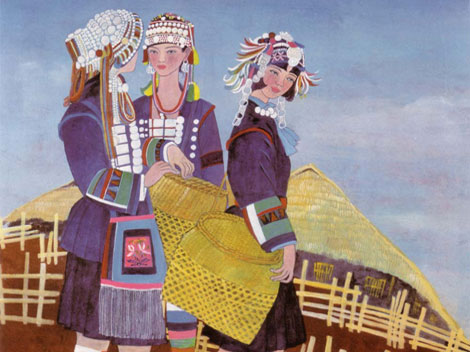
Today, a great majority of the Hani people, numbering 1,253,952, live between the Honghe and Lancang rivers in the south of Yunnan Province. Others are distributed in Pu'er, Menghai, Jinghong, Mengla, Luquan and Xinping. In history, the Hanis called themselves variously such as "Hani", "Kaduo", "Aini", "Haoni", "Biyue", "Budu" or "Baihong". After the founding of new China, they were generally called the Hani Nationality.
The Hani language belongs to the Yi language branch of the Tibeto-Burman group of the Sino-Tibetan family. This oral language contains 3 dialects — the Hani, Bika and Haobai. In the 1950s, an alphabetic writing system was created, but it aborted.
Most Hani people live on the level tops of mountains about 800 to 2,500 meters above sea level. They build terraced fields that climb from the valley bottom to the mountain top, irrigated by water piped from rivers and streams. Mojiang produces the most shellac in China.
Hani people worship natural god and their ancestors. Rich folk tales are left. In Hani villages, men and women, young and old always keep their favorite musical instruments at hand. A Hani New Year begins in the 10th lunar month, and their festivals include the Tenth Month Festival and Sixth Month Festival (Kuzhazha), also known as the field worshipping festival.
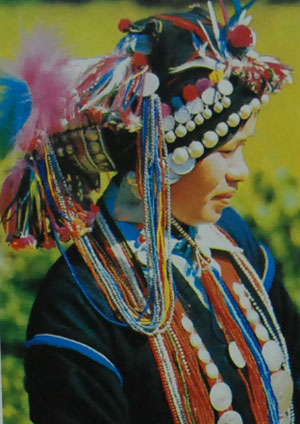
A Hani woman, living in Xishuangbanna Prefecture, and her attire.
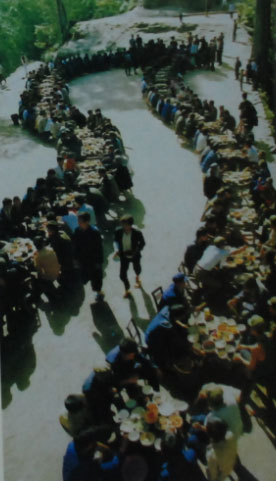
The Haras celebrate their new year's day with a grand least in the middle of the village street.
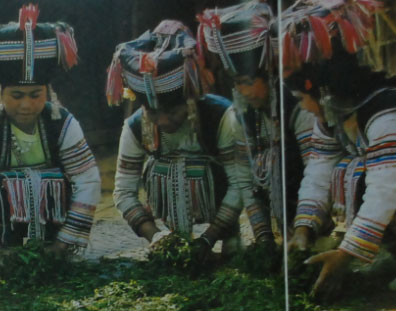
Hani women.Irving in Lancang County,rubbing tea.
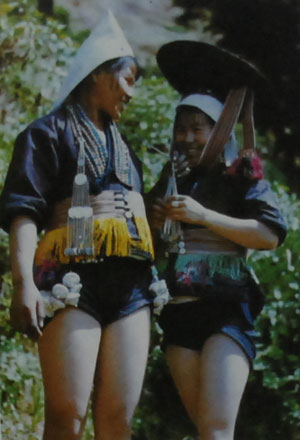
Yeche (a branch of the Hants) women, living in the Ailao Mountain area
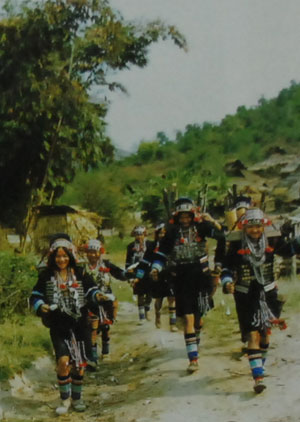
Hani women are diligent. On their way to the llold, Ihey often skein and never rest their hands.
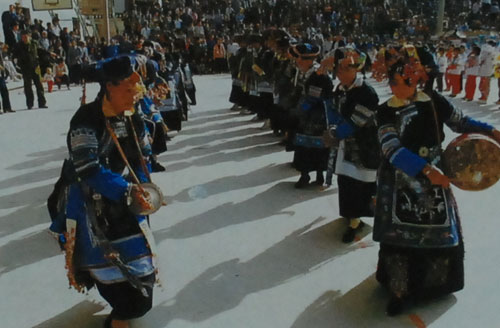
The Bamboo Tube Dance
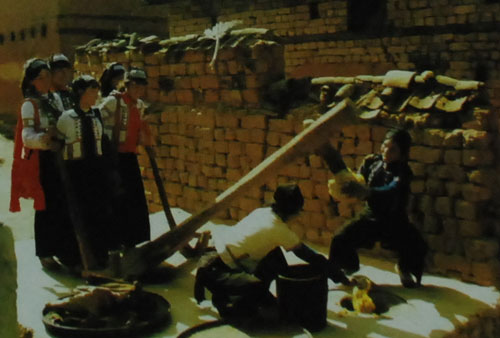
Husking glutinous rice





